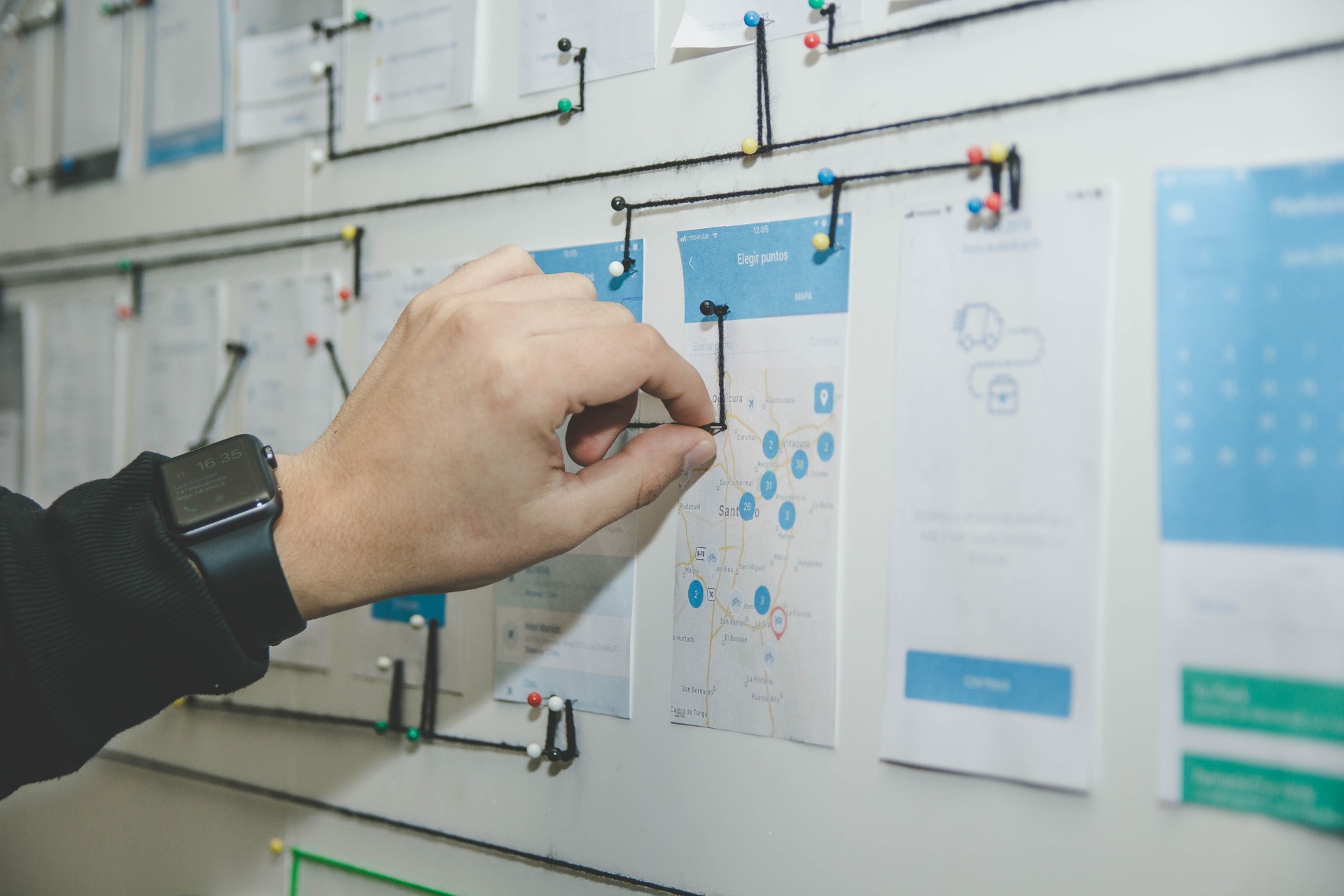Evaluation of aerodynamic risks on station platforms
Introduction
The Aerodynamic Platform Risk Assessment (APRA) is used to determine the level of risk created by the displaced air flow that is generated when trains pass through the station platforms. This evaluation helps to identify the factors that can be carried out to mitigate and reduce the risk for passengers.
What is aerodynamic risk?
When a train passes through a station and pushes air as it passes over and around the train, it causes a wake around it. People on platforms can experience strong gusts of wind, objects can be blown along the platform or onto the train itself, and it can cause vulnerable people to lose their balance.
As can be seen in the following sequence of images, an unbraked empty child pushchair, despite being at a considerable initial distance from the train, is attracted by the aerodynamic flow of the train passing through the station, until the pushchair ends up crashing into the train. Fortunately, in this real case, the cart was empty and only minor material damage was to be regretted.

The aerodynamic risk assessment of
a station platform assesses a variety of factors, including:
- train speed. Logically, the faster the train moves, the greater the train's ability to displace the airflow around it.
- distance between passengers / objects and the train . The closer passengers and objects are to the passing train, the greater the changes in air speed.
- the type of rolling stock . Some trains are designed to be, or are naturally more aerodynamic than others. The shape of the train (exterior) impacts the gust generated and the lateral extension of the wake caused by the movement of the train. Freight trains, like the one in the video, present a greater aerodynamic risk when passing than passenger trains for this reason. The greatest risk comes from goods carrying exposed cargo, such as road vehicles, or from container trains with large spaces between containers due to inconsistency in the train profile.
- wind speed and direction . Strong winds can worsen the aerodynamic effects of passing trains. Crosswinds, in particular, can increase aerodynamic risk, as slip stream speeds have been found to increase on the leeward side of the train (opposite side of the train to the way the wind is blowing).
The behavior of passengers at the station: key to a to rigorous aerodynamic risk assessment.
The assessment also considers other circumstances that may influence the proximity or number of passengers to the edge of the platform, or when the likelihood of light or wheeled objects on the platform will be greater . The station have more travelers during special events, y therefore, have more people positioned closer to the edge of the platform. The increase in luggage and other packages such as chairs children are variables to consider depending on the time of year and times at stations.
By evaluating these factors, an aerodynamic risk score is created for each platform. This score is used to determine appropriate mitigations.
Aerodynamic risk assessments on
platforms is putnin practice, usually only
in stations where trains pass without stopping. This can include both
sides of the central platforms (between tracks), even if uninterrupted traffic
only passes one side of the station. This is because, if the width of the
inter-rail platform is very narrow, passengers waiting on the adjacent platform
may still be at risk of aerodynamic effects. Therefore, aerodynamic risk
assessments for platforms are infrequent for platforms where all traffic stops
at the station. In these cases, the speed of the train is not considered
fast enough to create a sufficient aerodynamic hazard to require evaluation.
At a practical level, risk assessment follows the same risk assessment process within a RAMS Rail analysis program. Without being rigorous:
- Collection of aerodynamic risk assessment data.
- Calculation of the total risk of the station and its platforms.
- Determine mitigations.
- Record the results of the evaluation.
- Monitor implemented controls.
- Review the risk assessment.
In Leedeo Engineering, we are specialists in the development of projects of RAMS, giving support to any level required for tasks RAM and Safety, and both level of infrastructure or equipment on board .
Are you interested in our articles about RAMS engineering and Technology?
Sign up for our newsletter and we will keep you informed of the publication of new articles.





